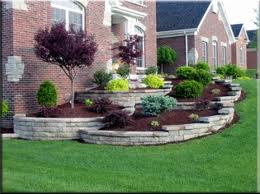Artificial grass is being used as a practical landscaping solution for businesses throughout the country. Property owners consider it a cost-effective alternative to natural grass landscaping because it’s maintenance-free. It doesn’t require water or any maintenance. Business owners also love the fact that a fake lawn is durable. In fact, it lasts much longer than a natural grass lawn.
But many property owners are still skeptical about installing fake grass. If you’re new to commercial-grade synthetic grass, you might have a few questions about the product. Is it a good investment? Does it pass as natural grass? Can you use it on uneven areas and slopes? Does a synthetic lawn withstand the outdoor elements? Here’s a look at the features and benefits of using commercial-grade synthetic grass to landscape your business.
Synthetic Grass is a Smart Investment
Every business owner wants to save money, and with artificial grass, you can do just that. Artificial grass is a smart investment. Compared to natural grass landscaping, artificial grass is a better investment that helps companies save money both today and tomorrow.
It Offers Benefits from Day One
As a short-term investment, it’s easy to see results from day one. This is because fake grass doesn’t need to be watered or maintained. As a business owner, you will immediately notice a reduction in your energy bill. You will also notice a reduction in costs associated with maintaining your property. In fact, you can completely eliminate nearly all costs associated with lawn maintenance, such as mowing, pest control, and reseeding.
Synthetic Grass offers Long-Term Benefits
Artificial grass is also a smart long-term investment. Designed to withstand heavy foot traffic, rain, heat, and UV rays, synthetic turf is a durable product that won’t break down on you any time soon. However, many fake turf products come with an eight to ten year warranty, which means you won’t have to change your lawn for nearly ten years!
Artificial Grass Upgrades Your Property
Synthetic grass enhances the look of your business. For aesthetic purposes, every business or property should be nicely landscaped. It adds value to the property and improves the overall appearance of the area. However, natural grass landscaping isn’t always appealing. Depending on the season or day of the month, natural grass might look dry, uneven, or even dead in some areas. This is why many property owners invest in fake turf landscaping solutions that appear lush and well maintained 365 days a year.
—————————————————————————————————————————
This article has been provided by Artificial Turf Supply, a wholesale retailer of artificial grass solutions. The company manufactures and distributes advanced synthetic grass for business landscaping and commercial-size projects.




